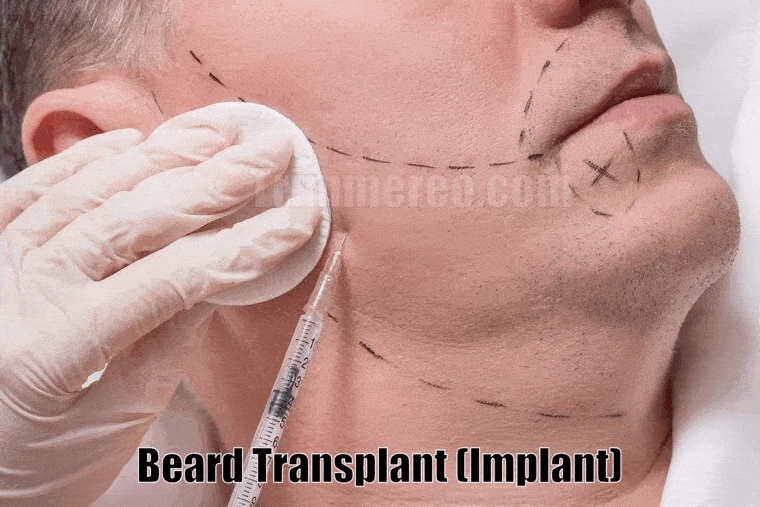Beard transplant is a surgical procedure that involves transplanting hair follicles from one area of the body, such as the scalp, to the beard area. This can be done to fill in bald spots or to create a fuller beard.
Having a full and well-groomed beard has become increasingly popular in recent years. However, not everyone is blessed with naturally thick and evenly distributed facial hair. If you’re struggling with patchy or thin beard growth, beard transplant may be the solution you’ve been searching for.
In this comprehensive guide, we’ll delve into the world of beard transplants, providing you with valuable information about the procedure, its benefits, and what you can expect throughout the process.
Understanding Beard Transplants
- What is beard transplant?
- Unlike other hair transplant procedures, beard transplant focuses specifically on restoring or enhancing facial hair.
- Causes of patchy or thin facial hair:
- Genetics: Some individuals are genetically predisposed to sparse beard growth.
- Hormonal imbalances: Hormonal fluctuations can impact beard density.
- Medical conditions: Certain medical conditions can affect facial hair growth.
- Scarring: Scars on the face can disrupt hair follicles, leading to patchy beard growth.
- Suitability of beard transplants:
- Beard transplants are suitable for individuals with different hair loss patterns and goals, ranging from minor touch-ups to full beard reconstruction.
Preparation and Pre-Procedure
Before undergoing beard transplant, proper preparation is essential. Here’s what you need to know:
- Choose a reputable and experienced hair transplant surgeon:
- Extensive research and referrals can help you find a skilled professional specializing in beard transplants.
- Schedule a consultation appointment:
- During the consultation, you can discuss your expectations, evaluate your candidacy, and address any concerns you may have.
- Follow pre-procedure instructions:
- The surgeon will provide specific instructions to follow before the transplant, such as avoiding certain medications or refraining from alcohol consumption.
The Beard Transplant Procedure
Anesthesia and Donor Hair Harvesting
To ensure a comfortable experience, anesthesia is administered locally. The procedure involves the following steps:
- Local anesthesia:
- The surgeon will apply a local anesthetic to numb the donor and recipient areas, ensuring you feel little to no pain during the procedure.
- Donor hair harvesting:
- Two primary methods are used: Follicular Unit Extraction (FUE) and Strip Harvesting.
- FUE: Individual hair follicles are extracted one by one from the donor area, typically the back of the head.
- Strip Harvesting: A strip of skin containing hair follicles is surgically removed from the donor area, and then the individual hair follicles are extracted from the strip.
- The surgeon will determine the most suitable method based on factors such as the extent of the transplant and the quality of the donor hair.
- Two primary methods are used: Follicular Unit Extraction (FUE) and Strip Harvesting.
Graft Preparation and Implantation
Once the donor hair has been harvested, the grafts are prepared and implanted in the recipient area:
- Graft preparation:
- The extracted hair follicles are carefully sorted and prepared for implantation to preserve their integrity and ensure optimal results.
- Implantation process:
- The surgeon strategically places the grafts into the recipient area, considering factors such as the direction and angle of hair growth, to create a natural-looking beard.
Post-Procedure Care and Recovery
Proper care and adherence to post-procedure instructions are crucial for successful healing and optimal results:
- Post-procedure care guide:
- The surgeon will provide you with specific instructions for cleaning the transplanted area, avoiding trauma, and managing any discomfort or swelling.
- Recovery timeline:
- Understand the typical recovery phases, including scabbing, shedding of transplanted hair, and eventual regrowth.
- Importance of following instructions:
- To ensure the best outcome, it’s essential to follow the surgeon’s post-procedure guidelines diligently.
Maintaining and Styling Your Transplanted Beard
Now that you have your transplanted beard, it’s important to care for and style it effectively:
- Proper beard care techniques:
- Learn the best practices for washing, conditioning, and moisturizing your transplanted beard to keep it healthy and vibrant.
- Grooming tips and styling advice:
- Discover various techniques for shaping and styling your beard to enhance its appearance and complement your facial features.
- Long-term maintenance strategies:
- Regular trimming, using beard trimmers, and incorporating a grooming routine will help you maintain your transplanted beard’s health and desired shape.
Risks and Considerations
While beard transplants can offer trans-formative results, it’s important to understand the potential risks and considerations involved:
- Potential risks and complications:
- Infection, scarring, and suboptimal growth are potential risks associated with beard transplants.
- Choosing a qualified surgeon:
- Selecting an experienced and reputable surgeon can significantly minimize the risks and increase the chances of a successful transplant.
- Making an informed decision:
- Consider the benefits and potential drawbacks before deciding if beard transplant is the right choice for you.
Cost and Financing Options
Understanding the financial aspect of beard transplant is essential:
- Factors influencing the cost:
- The extent of the procedure, the complexity of the case, and the expertise of the surgeon can impact the overall cost.
- Financing options and insurance coverage:
- Research potential financing options or insurance coverage that may be available to help with the cost of the procedure.
- Long-term value:
- While the upfront cost may seem significant, it’s crucial to consider the long-term value and benefits of having a full, well-groomed beard.
Beard Transplant FAQs
Who is a good candidate for beard transplant?
Good candidates for beard transplant include men who:
- Have a history of male pattern baldness
- Have a well-defined beard area
- Have healthy hair follicles
What are the risks of beard transplant?
The risks of beard transplant are similar to those of any other surgical procedure, including:
- Bleeding
- Infection
- Scarring
- Uneven hair growth
What are the benefits of beard transplant?
The benefits of beard transplant include:
- A fuller, more natural-looking beard
- Increased self-confidence
- Improved appearance
What is the cost of beard transplant?
The cost of beard transplant varies depending on the surgeon, the location of the procedure, and the amount of hair that needs to be transplanted. However, it is generally considered to be a more affordable option than other hair restoration procedures.
How is beard transplant performed?
Beard transplant is typically performed under local anesthesia. The surgeon will make small incisions in the beard area and then transplant individual hair follicles from the donor area. The transplanted hair follicles will eventually grow into a new beard.
How long does it take for beard transplant to heal?
The healing process for beard transplant typically takes about 2-4 weeks. During this time, the transplanted hair follicles will fall out, but new hair will start to grow in about 3-4 months.
How to care for beard transplant?
After beard transplant, it is important to care for the area properly. This includes:
- Keeping the area clean and dry
- Applying antibiotic ointment
- Avoiding strenuous activity
Conclusion
Beard transplant can be a life-changing procedure for individuals seeking a fuller and more aesthetically pleasing beard. By understanding the process, preparing properly, and following post-procedure care instructions, you can achieve remarkable results.
Remember to consult with a qualified and experienced surgeon to explore the possibilities of beard transplant. With the right approach and care, you can finally achieve the beard of your dreams and enjoy the confidence and satisfaction that comes with it.

Hey. I’m Bradley, the founder and editor of Trimmereo. I independently buy and test trimmers; electric shavers and I’ve been sharing my findings on this site for more than 8 years, hopefully helping others choose the right shaver.
If you found the information useful, consider subscribing to the Trimmereo newsletter as well. It’s free and I only send a few emails per month. Unsubscribe at any time.

